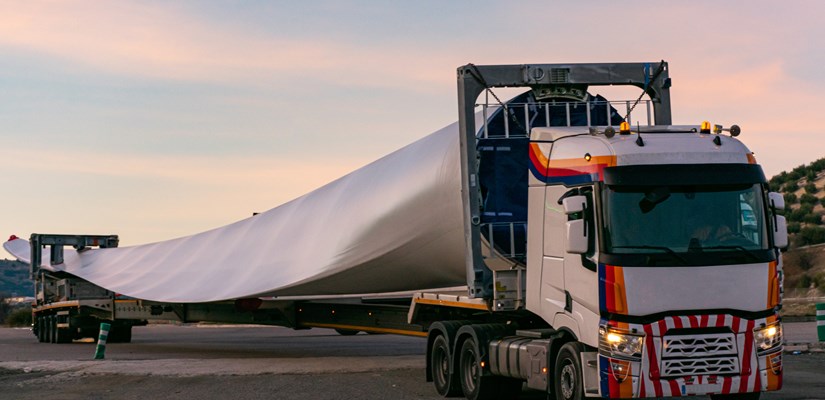
Our Skanska Costain STRABAG joint venture are piloting an industry leading solution where worn-out wind turbine blades destined for the incinerator are instead being used to create carbon-friendly reinforced concrete on HS2.
The innovative project will swap steel rebar, traditionally used to reinforce concrete, with sections of glass fibre reinforced polymer turbine blades that have reached the end of their operational lives generating low carbon electricity. By 2023, around 15,000 turbine blades will have been decommissioned across the UK and EU. Until now, expired blades have either been ground down to be used as building materials or sent to energy-from-waste incinerators.
The innovation, believed to be a world first, will use suitable sections cut from decommissioned wind turbine blades in reinforced concrete instead of steel rebar. Substituting steel for sections of retired wind turbine blades cuts by up to 90% the carbon generated by concrete reinforcement.
The initiative is being taken forward under HS2’s innovation programme on our HS2 Main Works project in partnership with the UK’s world-leading National Composites Centre, part of the High Value Manufacturing Catapult.
Innovation Manager Harrison O’Hara at Skanska Costain STRABAG Joint Venture said: “Wind turbine blades are extremely difficult to recycle. Ideas of what to do with them after they’re taken down range from turning them into playground slides to processing them into pellets for glues and paints.
“What’s potentially so significant about this innovation is that unlike some other turbine blade recycling initiatives, which involve reprocessing, our innovation reinforces concrete with sections simply cut from the turbines – massively reducing the carbon produced in repurposing the blades.”
With the innovation at an early stage, reuse will focus on swapping steel for turbine blades in low stress structures such as temporary access roads, top sections of concrete walls and ground bearing plinths – like those on which a portacabin might sit. Work on the proof of concept pilot is due to start in Spring 2021 and, if successful, could be followed by a full roll out across Skanska Costain STRABAG joint venture’s route, consisting of HS2’s London tunnels between the M25 motorway and Euston station.